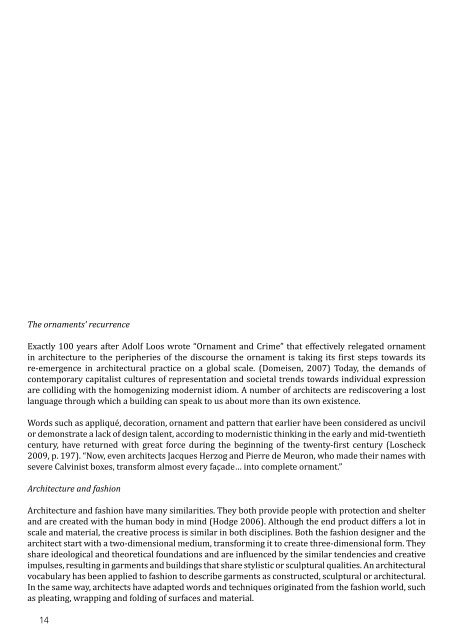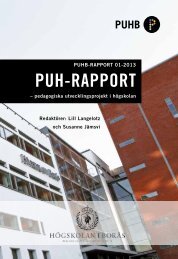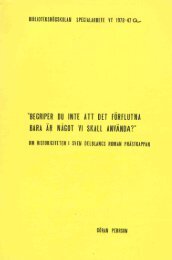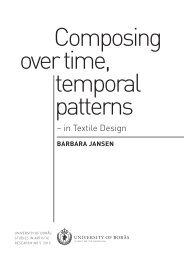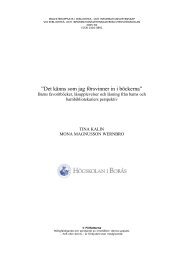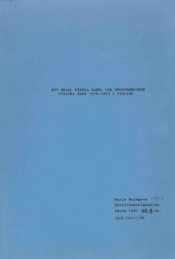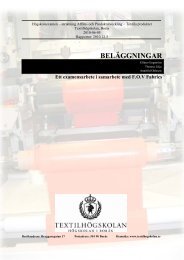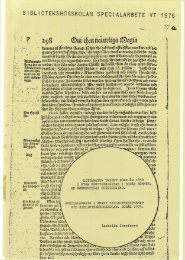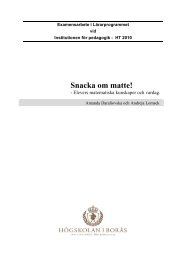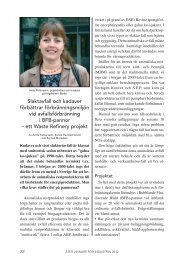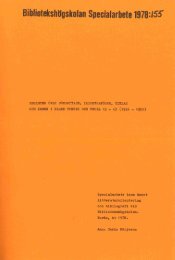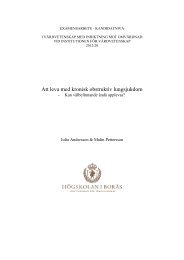KURBITCH! - BADA
KURBITCH! - BADA
KURBITCH! - BADA
Create successful ePaper yourself
Turn your PDF publications into a flip-book with our unique Google optimized e-Paper software.
Fig. 5 The facade of 40 Bond Street, NY by Herzog & de Meuron.<br />
The ornaments’ recurrence<br />
Exactly 100 years after Adolf Loos wrote “Ornament and Crime” that effectively relegated ornament<br />
in architecture to the peripheries of the discourse the ornament is taking its first steps towards its<br />
re-emergence in architectural practice on a global scale. (Domeisen, 2007) Today, the demands of<br />
contemporary capitalist cultures of representation and societal trends towards individual expression<br />
are colliding with the homogenizing modernist idiom. A number of architects are rediscovering a lost<br />
language through which a building can speak to us about more than its own existence.<br />
Words such as appliqué, decoration, ornament and pattern that earlier have been considered as uncivil<br />
or demonstrate a lack of design talent, according to modernistic thinking in the early and mid-twentieth<br />
century, have returned with great force during the beginning of the twenty-first century (Loscheck<br />
2009, p. 197). “Now, even architects Jacques Herzog and Pierre de Meuron, who made their names with<br />
severe Calvinist boxes, transform almost every façade… into complete ornament.”<br />
Architecture and fashion<br />
Architecture and fashion have many similarities. They both provide people with protection and shelter<br />
and are created with the human body in mind (Hodge 2006). Although the end product differs a lot in<br />
scale and material, the creative process is similar in both disciplines. Both the fashion designer and the<br />
architect start with a two-dimensional medium, transforming it to create three-dimensional form. They<br />
share ideological and theoretical foundations and are influenced by the similar tendencies and creative<br />
impulses, resulting in garments and buildings that share stylistic or sculptural qualities. An architectural<br />
vocabulary has been applied to fashion to describe garments as constructed, sculptural or architectural.<br />
In the same way, architects have adapted words and techniques originated from the fashion world, such<br />
as pleating, wrapping and folding of surfaces and material.<br />
Pleats are used as construction in both fashion and architecture, seen here in an example by Junya Watanabe, fig 6 and foreign<br />
office architects, fig 7.<br />
14 15


